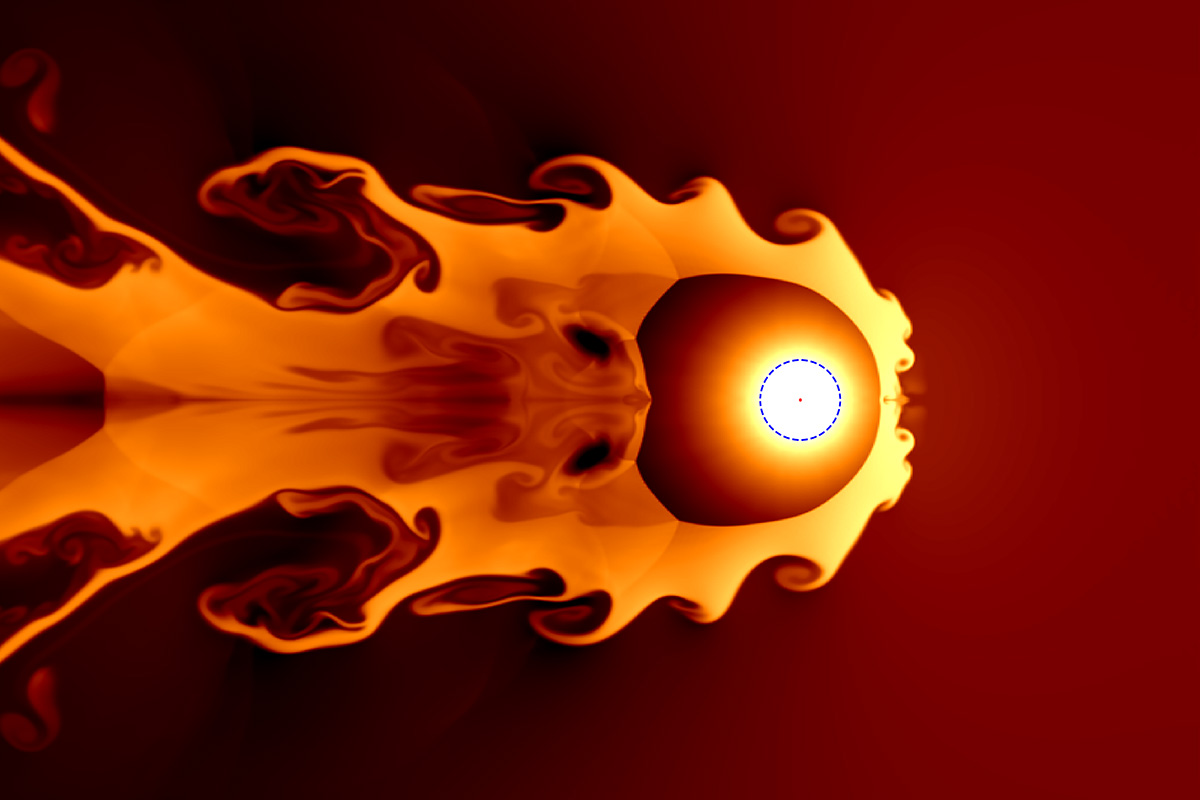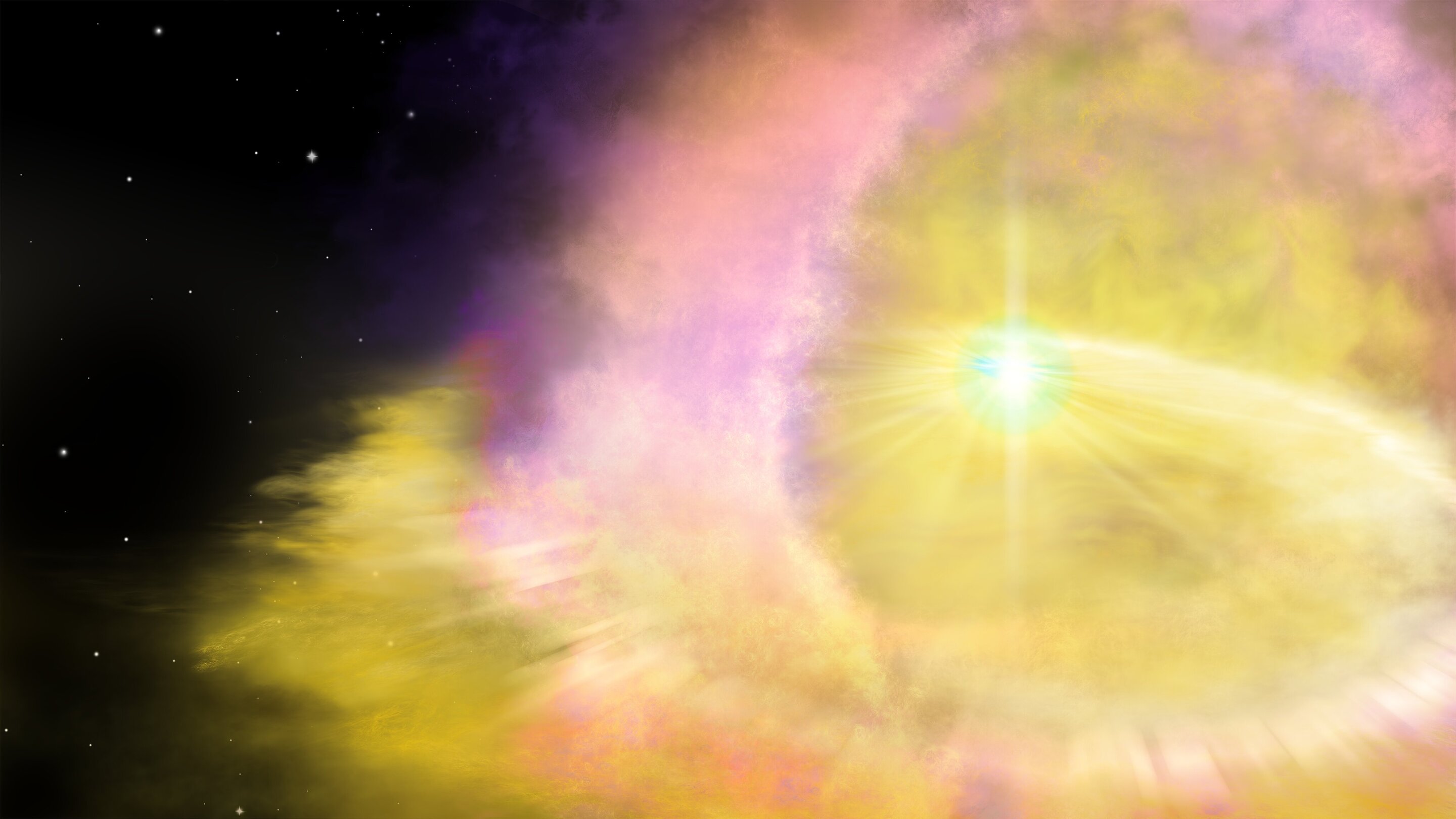
supernova tagged posts


Graphic courtesy Jesse Miller
Imagine reading by the light of an exploded star, brighter than a full moon – it might be fun to think about, but this scene is the prelude to a disaster when the radiation devastates life as we know it...
Read More
Credits: Copyright 2018 by A. Maury and J. Fabrega, used with permission
Unprecedented observations of a nova outburst in 2018 by a trio of satellites, including two NASA missions, have captured the first direct evidence that most of the explosion’s visible light arose from shock waves — abrupt changes of pressure and temperature formed in the explosion debris.
A nova is a sudden, short-lived brightening of an otherwise inconspicuous star...
Read More
A supernova at least twice as bright and energetic, and likely much more massive than any yet recorded has been identified by an international team of astronomers, led by the University of Birmingham.
The team, which included experts from Harvard, Northwestern University and Ohio University, believe the supernova, dubbed SN2016aps, could be an example of an extremely rare ‘pulsational pair-instability’ supernova, possibly formed from two massive stars that merged before the explosion. Their findings are published today in Nature Astronomy.
Such an event so far only exists in theory and has never been confirmed through astronomical observations.
Dr...
Read More





Recent Comments